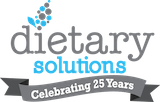PDPM is coming! October 1, 2019 is right around the corner, is your team ready to maximize nutrition reimbursement?
In July 2018, CMS finalized a new case-mix classification model, the Patient Driven Payment Model (PDPM), that, effective October 1, 2019, will be used under the Skilled Nursing Facility (SNF) Prospective Payment System (PPS) for classifying SNF residents in a covered Medicare Part A stay.
According to CMS, the changes are prompted by issues with the current case-mix model (RUG-IV) providing payments based primarily on the amount of therapy provided without taking into account a resident’s unique characteristics, needs, or goals. Under PDPM, CMS anticipates payments will be improved by:
- Increasing accuracy and appropriateness by focusing on the resident rather than the volume of services provided
- Reducing administrative burden on providers
- Improving SNF payments to currently underserved beneficiaries
The change in the Medicare Part A payment system is an exciting time that provides opportunity to your nutrition services staff to have increased visibility in their role of providing resident care and obtaining reimbursement for the services they provide. Prompt and accurate identification of nutrition related characteristics and comorbidities will:
- Help ensure your facility receives appropriate payment for your SNF residents during a Part A stay
- Contribute to overall resident satisfaction
- Help residents reach their care goals and desired outcomes
In assessing the overall needs of a resident, the impact of nutrition related services on reimbursement can be seen in multiple categories:
- Speech Language Pathologist (SLP) needs
- Nursing needs
- Non-Therapy Ancillary (NTA) components
SLP Needs
- Swallowing Disorder Present or Not Present:
- Populated from MDS section K0100: Identification of signs and symptoms of a possible swallowing disorder during the 7-day look-back period
- Information obtained by observation or interview of residents, resident representatives and staff or in the medical record
- Mechanically Altered Diet Present or Not Present
- Populated from MDS section K0510C, use of a mechanically altered diet
- Defined in the RAI manual as A diet specifically prepared to alter the texture or consistency of food to facilitate oral intake. Examples include soft solids, pureed foods, ground meat, and thickened liquids.
Nursing Needs
Responses from Section K contribute to Special Care High Category or Special Care Low Category determination. Accurate calculation and documentation of weight loss, enteral feedings and parenteral/IV feedings are a critical part of identifying nursing needs.
NTA Components
- Malnutrition or At Risk for Malnutrition (I5600)
- Feeding Tube (K0510B2)
- Parenteral/IV Feeding, High Intensity (K0510A2 AND K0710A2=3)
- Parenteral/IV Feeding, Low Intensity (K0510A2 AND K0710A=2 AND K0710B2=2)
- Morbid Obesity (I800 A-J based on ICD-10 Code)
Changes in frequency of MDS assessments under PDPM will make it crucial for resident care needs and comorbidities to be identified early and accurately. Now is the time to start looking at processes in your facility to ensure your nutrition services staff is effectively contributing to the MDS process with identification of nutrition care needs, comorbidities and possible swallowing difficulties.
Contact Dietary Solutions at consultants@dietarysolutions.net or 866-932-0828 for help implementing this new process or improving your existing policies and procedures.

